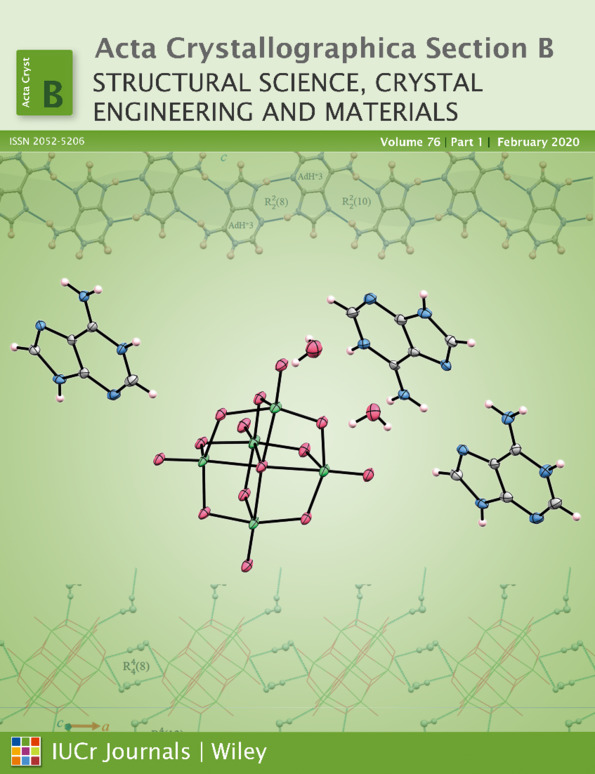Rationalization of the crystal structure of eudidymite Na2Be2[Si[4]6O15]·H2O in light of the extended Zintl–Klemm concept
Abstract
The structure of eudidymite is described in light of the extended Zintl–Klemm concept which considers that Na and Be atoms transfer their six valence electrons to the six Si atoms, converting them into Ψ-P which forms a skeleton characteristic of pentels (Group 15 elements) and is similar to that described in the compound (NH4)2Ge[6][Ge[4]6O15] when analysed in the same manner. The Si[4] skeleton is formed of bilayers that are connected through Be2O6 groups which are in fact fragments of the β-BeO structure which bridge the two contiguous Si-bilayers by sharing O atoms. In this context, the Be atoms play a dual role, i.e. on the one hand converting the Si atoms into Ψ-P, on the other hand replicating fragments of its own β-BeO structure. The Be atoms partially reproduce their own structure despite it being enclosed in a more complex network such as in Na2Be2[Si[4]6O15]·H2O. Calculations of the ionic strength I considering Si as Ψ-P is energetically more favourable than when I is calculated on the basis of tetravalent Si in the silicate, justifying this new approach of developing the theory of pseudo-structure generation. This approach offers a major new development in the study of crystal structures.




